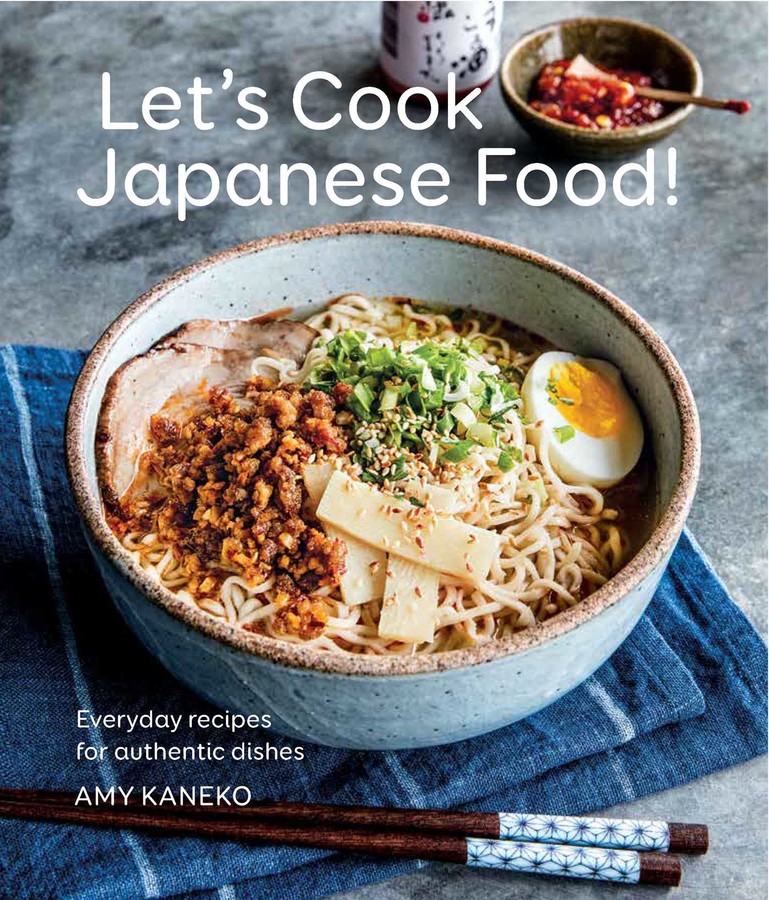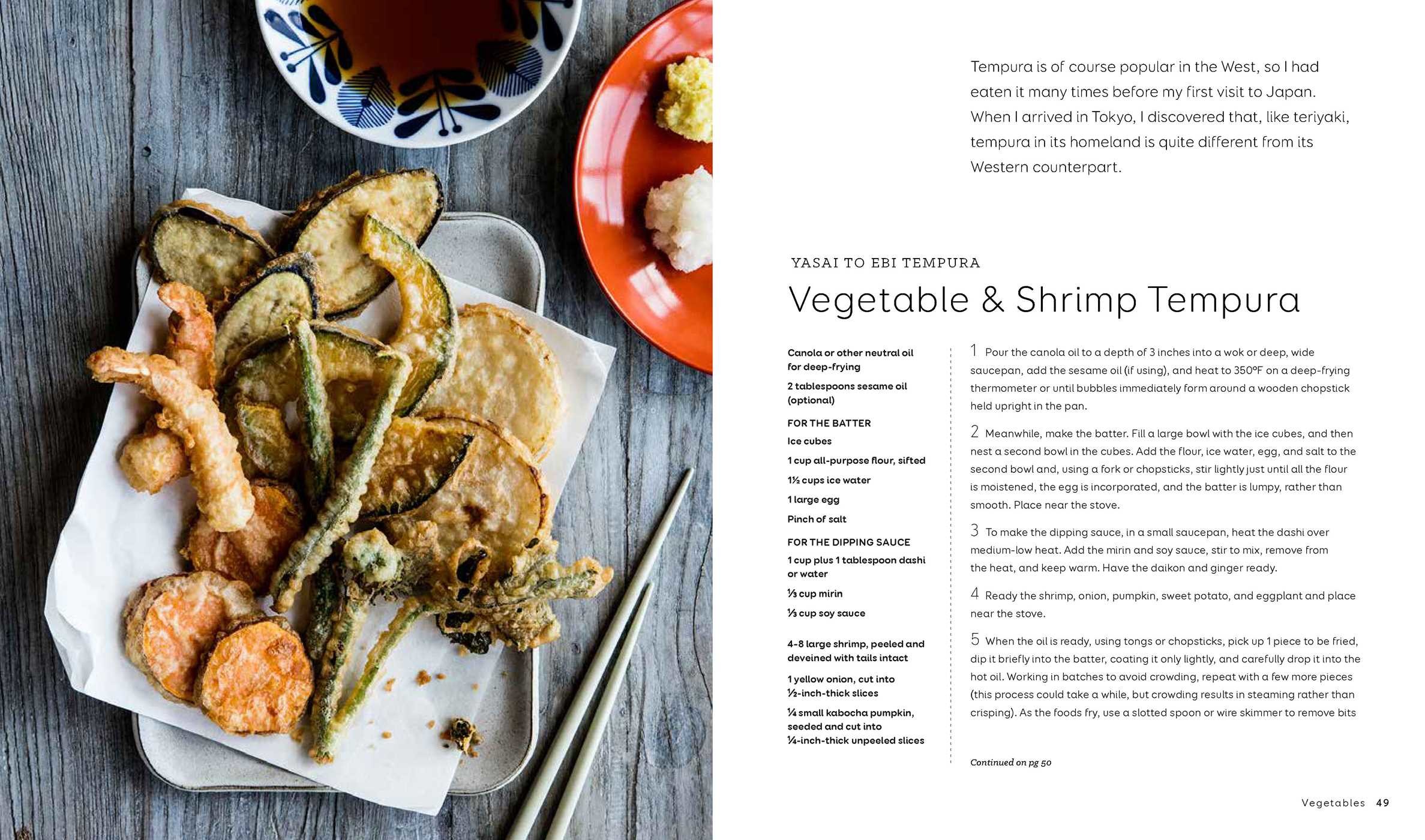Plus get our latest book recommendations, author news, and competitions right to your inbox.
Table of Contents
About The Book
Home-style Japanese cooking is demystified in this refreshing and informative cookbook. After marrying into a Japanese family, the American author was taken under her mother-in-law's wing to learn the ins and outs of Japanese cooking. Here she presents her acquired knowledge in an appealingly designed book with Japanese graphic motifs and color photos. The recipes themselves are a mix of family favorites and restaurant dishes Kaneko learned to recreate at home. Yet readers will see few of the familiar foods available in Japanese restaurants in the U.S. Instead, the book illustrates how to make Japanese home-style favorites, like Gyoza and Tempura, as well as Yoshuko dishes combining Japanese and Western influences, like Curry Rice, and Omu Rice, an omelet stuffed with tomato-y chicken fried rice. In a helpful glossary, Kaneko identifies the basic ingredients and equipment needed to recreate these recipes in an average Western kitchen. Chapters devoted to Tofu and Eggs; Vegetables, Fish and Shellfish; Meat and Poultry; and Rice Noodles and Dumplings intersperse recipes with boxes that highlight Japanese traditions and recollections on the author’s time living in Tokyo.
From Amazon.com:
This is a wonderful cookbook for those who love to eat Japanese food but are a bit intimidated by how complicated preparing it may seem. I've been making simple Japanese dishes for years, but I wanted to add more than just onigiri, sushi and udon into the mix. Amy Kaneko's book provides a good variety of dishes that are not that difficult to prepare and are sure to make your family's tummies satisfied. Even the pickiest of eaters (kids) will find some of Amy's recipes rather tasty.
Excerpt
6 slices thick-cut bacon
2 tablespoons canola or other neutral oil
½ carrot, peeled and sliced into strips about 2 inches long and 1/ 2 inch wide
½ head green cabbage, cut into 1-inch squares
½ yellow onion, sliced into 1/ 4-inch-thick wedges
2 packages (14 ounces each) yakisoba noodles
About 2 tablespoons yakisoba sauce (page 17) or 1–2 tablespoons Worcestershire sauce
Salt and freshly ground pepper
Aonori (page 161) and beni shoga (page 157) for garnish (optional)
SERVES 4
Place the bacon in a single layer between 2 layers of paper towels and microwave on high for 3 minutes until cooked through but not crispy, or cook the bacon in a frying pan over medium-high heat, turning as needed, 4–5 minutes. Cut into 2-inch pieces and set aside.
Heat a wok or large frying pan over high heat until hot. Add the oil and swirl the pan to coat the bottom and sides with oil. When the oil is hot, add the carrot, cabbage, and onion and stir-fry about 2 minutes. Add the bacon and stir to combine. Add the noodles, stir-fry 1 minute, then add ¼ cup water, cover the pan, and cook 1 minute longer. Uncover and allow any remaining water to evaporate.
Add some sauce and continue to stir-fry to combine the sauce with the noodles and vegetables, 1–2 minutes. Season with salt and pepper and transfer to a platter. Garnish with aonori and beni shoga, if using, and serve right away.
note: The yakisoba bottled sauce with the strong flavor of soy and Worcestershire sauce is what givesyakisoba its distinctive tang. You can make these pan-fried noodles with Worcestershire sauce alone if you cannot find the proper prepared sauce.
Aonori (literally “blue nori”), a different type of seaweed, is sold dried and already crushed into small flakes, usually in a packet or a shaker. It has a very fresh marine aroma and, despite the translation, is medium green in color. It is sprinkled on dishes such as Okonomiyaki (page 30).
Beni shoga (pickled ginger): Bright pink, sharp-flavored, vinegary matchsticks of marinated ginger, it is sometimes stocked in the refrigerated Asian section of Western markets (with the dumpling wrappers and tofu). Do not mistake beni shoga for gari, the pale marinated ginger served with sushi.
Product Details
- Publisher: Weldon Owen (March 7, 2018)
- Length: 168 pages
- ISBN13: 9781681881775
Raves and Reviews
Home-style Japanese cooking is demystified in this refreshing and informative cookbook. After marrying into a Japanese family, the American author was taken under her mother-in-law's wing to learn the ins and outs of Japanese cooking. Here she presents her acquired knowledge in an appealingly designed book with Japanese graphic motifs and color photos. The recipes themselves are a mix of family favorites and restaurant dishes Kaneko learned to recreate at home. Yet readers will see few of the familiar foods available in Japanese restaurants in the U.S. Instead, the book illustrates how to make dense, exotic creations like a sumo wrestler's stew with fish, bacon, chicken and tofu, as well as Yoshuko (fusion) dishes combining Japanese and Western influences, like Beef and Onions in Tomato Gravy over Rice. In the first few pages, Kaneko identifies the basic ingredients and equipment needed. Chapters devoted to Tofu and Eggs; Vegetables, Fish and Shellfish; Meat and Poultry; and Rice Noodles and Dumplings intersperse recipes with boxes that highlight Japanese traditions...Kaneko recognizes the home chef's limits: she readily employs the concept of mottai nai (don't waste) and saves readers time with suggestions for reusing leftovers. (Apr. 2007)
– Publishers Weekly
"Let's Cook Japanese Food!, for people who no longer want to feel intimidated by home-cooked Japanese food"
– Food.com
Resources and Downloads
High Resolution Images
- Book Cover Image (jpg): Let's Cook Japanese Food! Hardcover 9781681881775









